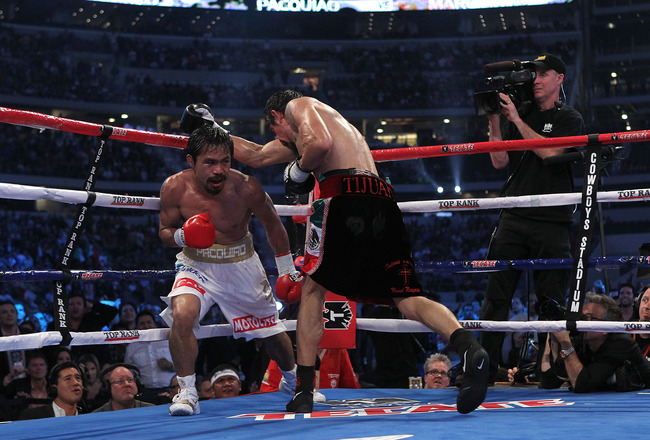
When fighting at striking range there are a number of tasks one must perform if one hopes to land strikes without simply trading blow for blow with one's opponent.
Pre-Entry: The first task a fighter faces is closing the distance; against certain fighters such as Lyoto Machida and others from a Shotokan or other point fighting lineage, this itself is an enormous task, as they will simply re-establish the distance or circle out at every attempt by the opponent to close the distance. A number of effective footwork techniques should be studied to achieve this - cutting off of the ring or cage, cross-steps, shifts.
Entry: Then there is the matter of eliminating the opponent's direct counter-attack while throwing one's own attack (accomplished by attacking on an angle, checking an opponent's glove with a hand trap, or by using effective head movement on the entry).
Exit: Then there is the matter of an exit - one of the most forgotten aspects in the modern fight game. After landing a strong punch or combination it is absolutely in ones own interest to not let the opponent strike back, or in some cases to not let him grab a hold of a clinch and ride out the storm until his faculties return.
A correct exit following a combination (whether successful or not) would be to duck out to the left or right (usually in the direction which one's last punch came from is the smartest option: e. g. a weave to the right for a right hook, or to the left for a left hook), to sidestep (again in the direction from which the last punch came), to clinch (which can be followed by a throw or simply some strikes from the clinch as in my Punch and Clutch article). The final option is to re-establish range by finishing one's attack with a long jab to prevent opponent from following (as the Klitschkos have found great success with and Antonio Rodrigo Nogueira does almost exclusively).
Very, VERY few fighters successfully utilize this pattern of offense. And even less can do it repeatedly over the course of a match. It takes great intelligence and creativity to be able to utilize this pattern, and great stamina to keep it up, but those who have managed to have found enormous success.
Watching Manny Pacquiao fight one will see him almost always enter with head movement or a hand trap, land his punches, then exit one of several ways so that the opponent does not strike him. Sugar Ray Robinson, Willy Pep and others were also famous for this, Bernard Hopkins and Roy Jones are also excellent examples.
A quick look at this highlight from Pacquiao's destruction of Oscar De La Hoya is a lesson in entering and exiting the pocket. Every time Pacquiao is done moving in, he steps out to his right, jabs to restablish distance, or begins slipping Oscar's retaliation before Oscar has begun it. It is not clairvoyance on Pacquiao's part that he can avoid the vast majority of Oscar's punches, it is simply that he is extremely well drilled in getting in and getting out, and disciplined enough to stick to it for the majority of exchanges.
Looking for this pattern of Pre-Entry (or closing the distance), Entry (eliminating the simultaneous counter while firing one's own punches) and Exit is a great way to truly understand the decay of boxing over the last 30 years, and the low level of striking in most MMA bouts.
I hope to talk much more about what I have termed the Pattern of Offense in my upcoming books and articles. While I have no plan for a "Pattern of Offense" book, the techniques in my upcoming Guide to Angles will provide readers with dozens of ideas to assemble their own combinations that adhere to the Pattern of Offense.
No comments:
Post a Comment